
Roots
To truly behold the profound journey etched within each curl, each coil, each wave, is to listen to the whispers of epochs past. It is to trace the enduring spirit of textured hair – a living testament to ancestral brilliance and unyielding passage. For centuries, the very structure of our hair has served as a silent archive, holding the imprints of geography, climate, and the extraordinary human will to survive and flourish amidst upheaval. This exploration begins at the cellular bedrock, moving through the biological marvel that is textured hair, and considers how its inherent characteristics whisper of deep time and distant lands.

The Elemental Biology of Ancestral Strands
The resilience of textured hair, often perceived through its remarkable strength and ability to resist breakage under certain conditions, finds its beginnings in microscopic architecture. Unlike straight hair, which typically grows in a round or oval cross-section, textured hair emerges from a follicle that is elliptical, or even ribbon-like. This unique shape causes the hair shaft to twist as it grows, creating the characteristic curls, coils, and zig-zags. This helical formation, a spiral ascending from the scalp, distributes tension along the strand differently, granting a certain springiness.
Consider, for a moment, the intricate dance of keratinocytes forming this protein filament, influenced not only by genetics but by the very environments our forebears navigated. The tight coiling offers a natural shield against the sun’s intense glare, protecting the scalp and retaining moisture in arid climates – a biological adaptation cultivated over generations in regions where ancestral communities thrived.
The hair’s inherent structure, particularly its uneven distribution of disulphide bonds along the curve of the strand, contributes to its specific mechanical properties. This internal architecture means textured hair can stretch and recoil, absorbing impact and bending without snapping in ways straight hair might not. Such biophysical attributes are not mere coincidence; they speak to eons of adaptation, a biological memory of sun-drenched savannas and humid forests. When we speak of hair’s resilience, we speak of this deep, elemental heritage.
Textured hair’s biological architecture, shaped by ancestral environments, inherently supports its robust nature.

Mapping Heritage in the Hair Follicle
Hair classification systems, though often modern constructs, can, when viewed through a heritage lens, offer a framework for appreciating the spectrum of textured hair. From the broad categories to the finer distinctions within curl patterns, these systems attempt to articulate a diversity that has always existed, reflecting human movement across continents. Ancestral communities understood this spectrum not through numerical types, but through lived experience and shared tradition. They knew the variations in hair and developed practices tailored to its unique needs long before scientific nomenclature existed.
The very lexicon we use to describe textured hair today, while sometimes influenced by contemporary trends, often carries echoes of traditional understanding. Terms like ‘coily,’ ‘kinky,’ and ‘wavy’ attempt to capture the visual realities that Indigenous African and diasporic communities have known intimately for millennia. It is a constant reminder that hair, in its diverse forms, transcends mere aesthetics; it is a repository of history, an ancestral codex. The ways in which hair responds to humidity, to dryness, to various oils and butters are not anomalies, but consistent patterns understood and addressed through generational wisdom, passed down from those who lived in direct communion with nature’s rhythms.
- Melanin ❉ The pigment responsible for hair color, offering natural protection against solar radiation, a factor of ancestral climates.
- Keratin Structure ❉ The protein building blocks, whose arrangement creates the distinctive coils and curves of textured strands.
- Follicle Shape ❉ The elliptical opening from which textured hair grows, dictating its spiral trajectory.
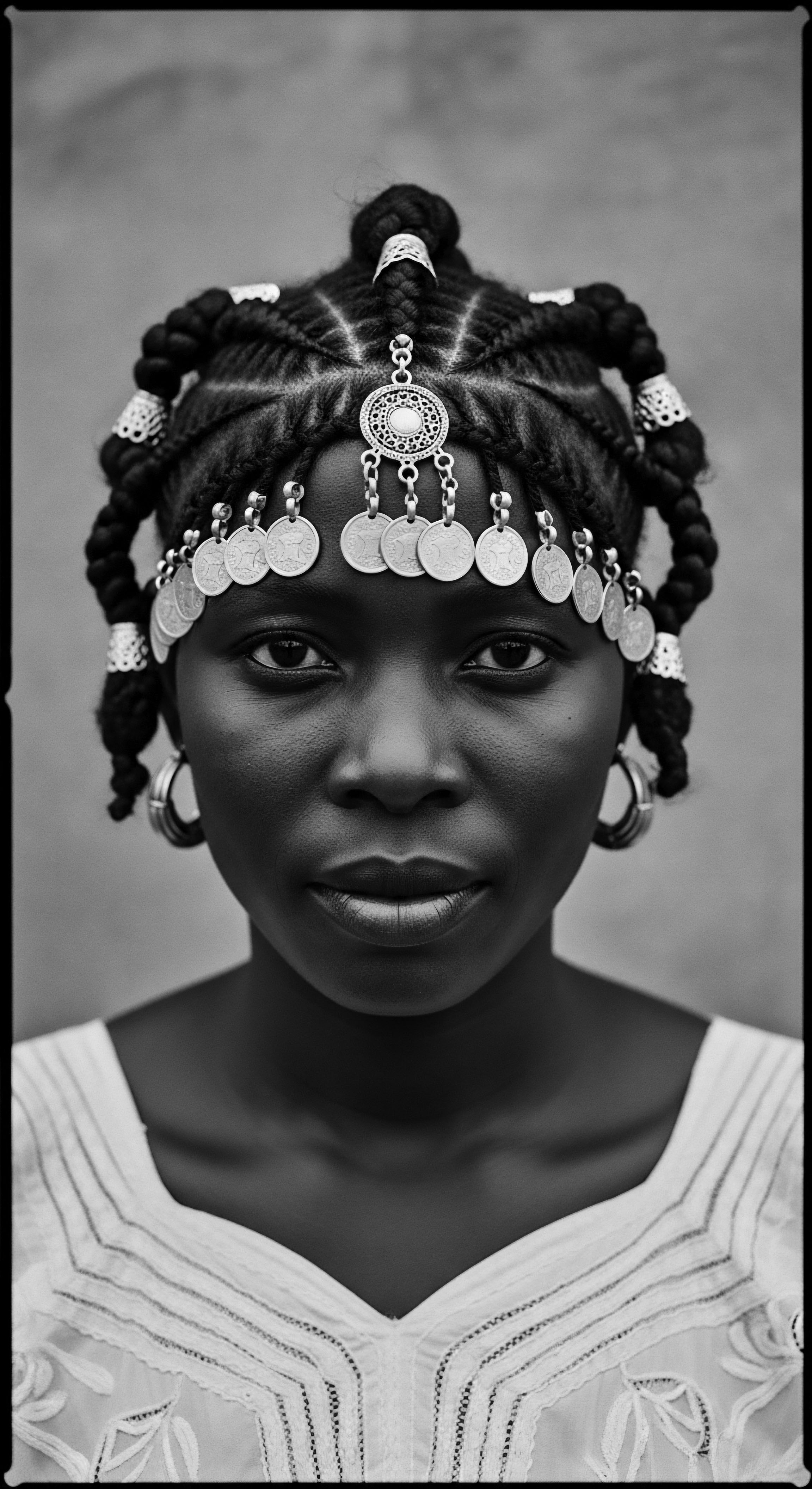
Ancestral Climates and Hair’s Adaptive Wisdom
How did the movement of peoples shape hair’s intrinsic characteristics? Consider the profound impact of ancestral migrations on human biology, including hair. As groups traversed diverse geographies, facing varying climates and sun exposures, genetic adaptations arose. Textured hair, with its ability to create a dense canopy, provides natural insulation and defense.
It helps to regulate scalp temperature, keeping it cooler in intense heat and warmer in cooler conditions. The tight coiling also slows down evaporation of moisture from the scalp, a vital advantage in arid environments.
Early human migrations out of Africa, for instance, saw adaptations to new solar intensities and humidity levels. While hair texture is deeply genetic, its evolutionary purpose is tied to survival in ancestral homelands. The very genes that dictate the formation of our curls carry the memory of these ancient journeys. This biological resilience, interwoven with the heritage of human movement, sets the stage for understanding the broader cultural significance of textured hair.
| Epoch Pre-Migration Africa (Tens of thousands of years ago) |
| Environmental Pressures Intense solar radiation, heat, humidity variations |
| Hair Adaptation Manifestations Densely coiled hair providing scalp protection and thermal regulation. |
| Epoch Early Diasporic Movements (Across varied climates) |
| Environmental Pressures New humidity levels, different sun intensities, diverse dietary influences |
| Hair Adaptation Manifestations Continued genetic diversity in hair patterns, subtle adaptations for new environments. |
| Epoch The genetic markers for textured hair carry the wisdom of our ancestors' journeys across the globe. |

Ritual
In the quiet moments of care, in the communal gathering around a warm hearth, in the deft hands shaping a crown, the deep connection between textured hair, ancestral knowledge, and human migration finds its most palpable expression. The techniques, tools, and transformations applied to textured hair are not merely stylistic choices; they are living rituals, each an echo of customs born of necessity, sustained by community, and refined through generations of passage and adaptation. These practices, honed over vast stretches of time and across continental shifts, speak volumes about the ingenuity and resilience of our forebears, informing how textured hair’s journey connects us to a shared heritage.

The Enduring Legacy of Protective Braiding?
The tradition of protective styling, particularly through braiding, stands as a profound testament to ancestral knowledge and the human spirit’s capacity for innovation in challenging circumstances. Before the modern era, and certainly throughout periods of forced migration and enslavement, these intricate styles served far more than an aesthetic purpose. They were a means of preserving hair health over long periods, minimizing breakage, and protecting the scalp from environmental harshness. This practicality was paramount during arduous journeys and in labor-intensive settings.
Beyond the practical, these styles often functioned as a hidden language, a covert system of communication and resistance. A poignant example comes from the period of the transatlantic slave trade in colonial Colombia. Enslaved African women, forcibly removed from their homelands and subjected to unspeakable brutality, reportedly braided intricate patterns into their hair that served as maps to freedom or as indicators of safe passage. Historians and oral traditions recount that specific styles, such as the ‘departes’—thick, tight braids tied into buns—signaled plans for escape, while the curved lines of braids could represent winding roads or paths to water sources (Ancient Origins, 2022; Jollof Mash, 2023; TDS News, 2025).
These concealed blueprints for liberation, often hidden in plain sight, underscore the profound ingenuity and courage of people denied basic human dignity. The practice extended to hiding gold and seeds within the braids, providing vital resources for survival after escape. This is a powerful demonstration of how hair became an active tool of resistance and survival during one of humanity’s most severe migrations. This heritage of ingenuity, born from extreme adversity, resonates deeply today as protective styles continue to shield and celebrate textured hair.

Natural Styling as an Echo of Environment
The very concept of “natural styling” today connects directly to ancestral methods of defining and caring for textured hair. Before the advent of modern chemical treatments, our ancestors relied on methods that worked in harmony with the hair’s intrinsic patterns. This meant understanding how to enhance curls and coils using natural elements, derived from the land they inhabited.
Techniques like finger coiling, twisting, and bantu knotting were not invented in a vacuum; they arose from observation and practical experimentation over centuries. They permitted hair to remain moisturized, healthy, and celebrated in its authentic form.
The tools used in these practices were simple, often crafted from natural materials available in the environment ❉ bone combs, wooden picks, and even one’s own fingers. These tools, alongside ingredients gathered from the earth, formed the bedrock of hair care. The collective knowledge of these traditional methods, passed down through oral tradition and lived practice, allowed communities to maintain hair health and aesthetic expression despite displacement and the loss of material culture. This enduring wisdom, a truly remarkable heritage, ensures that the soul of a strand remains connected to its origins.
Hair practices, from protective braids to natural definitions, are living archives of ancestral resilience and ingenuity.
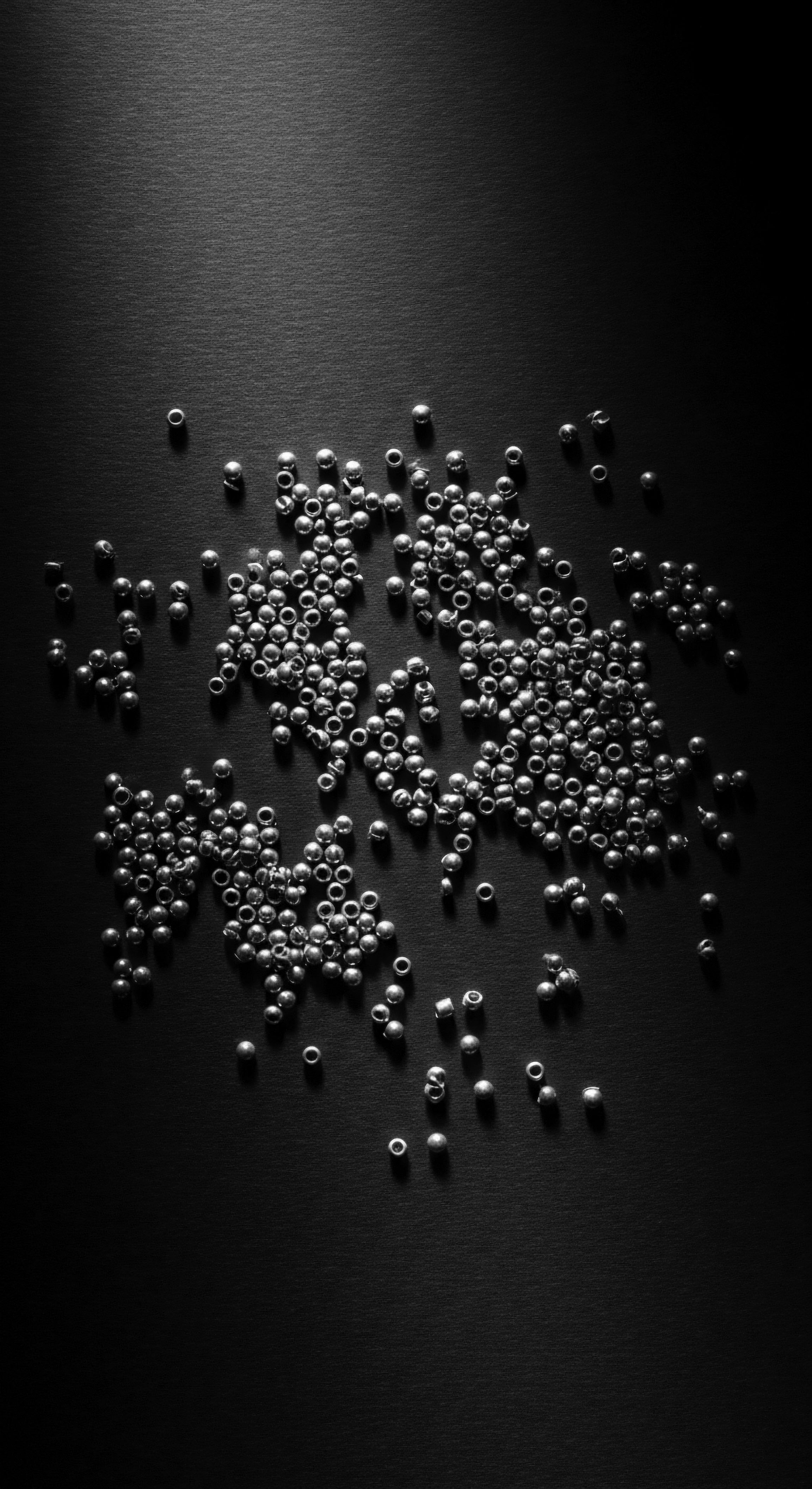
Hair as a Symbol of Identity and Community Through Migration
Throughout historical migrations, hair has remained an unmistakable marker of identity, community affiliation, and cultural continuity. In many traditional African societies, hairstyles conveyed social status, age, marital status, tribal identity, and even religious beliefs (Halo Collective, 2024). When people were forcibly removed from their lands, these visual languages were often targeted for suppression. The deliberate shaving of heads upon arrival at slave ports was a calculated act to strip individuals of their identity, sever their connection to homeland, and degrade their humanity (Library of Congress, n.d.).
Despite these brutal attempts at erasure, communities in the diaspora persisted in their hair practices, often adapting them to new circumstances and available resources. The communal act of hair braiding on Sundays, for example, became a vital tradition for enslaved people in the Americas, providing one of the few moments for shared intimacy, storytelling, and the preservation of cultural memory (Library of Congress, n.d.). This ongoing practice, despite oppressive conditions, transformed hair care into an act of profound resistance and cultural affirmation. It cultivated an enduring communal bond.
| Cultural Context Pre-Colonial African Societies |
| Hair's Role Indicator of tribal lineage, social standing, life stage, spiritual beliefs. |
| Reflected Heritage Aspect Deep communal bonds, holistic view of self and adornment. |
| Cultural Context Transatlantic Slave Trade & Diaspora |
| Hair's Role Tool for covert communication, hiding resources, symbol of defiance and cultural memory. |
| Reflected Heritage Aspect Unyielding spirit of resistance, adaptation, and preservation of identity amidst adversity. |
| Cultural Context Post-Emancipation & Modern Era |
| Hair's Role Affirmation of self, connection to roots, political statement, aesthetic expression. |
| Reflected Heritage Aspect Continuing legacy of self-determination, beauty standards redefined, ancestral pride. |
| Cultural Context Hair’s significance transcends time, acting as a dynamic vessel for cultural identity across diverse journeys. |

Relay
The story of textured hair is one of unbroken lineage, a continuous relay of knowledge and spirit across generations. It is a narrative of resilience, where each strand carries the weight of history and the promise of tomorrow. This enduring heritage, forged in the crucible of ancestral journeys and migrations, has profoundly influenced not only individual identity but also collective movements toward liberation and self-acceptance. The intricate relationship between the intrinsic properties of textured hair and the practices born of necessity and celebration continues to unfold, shaping futures and voicing profound truths.
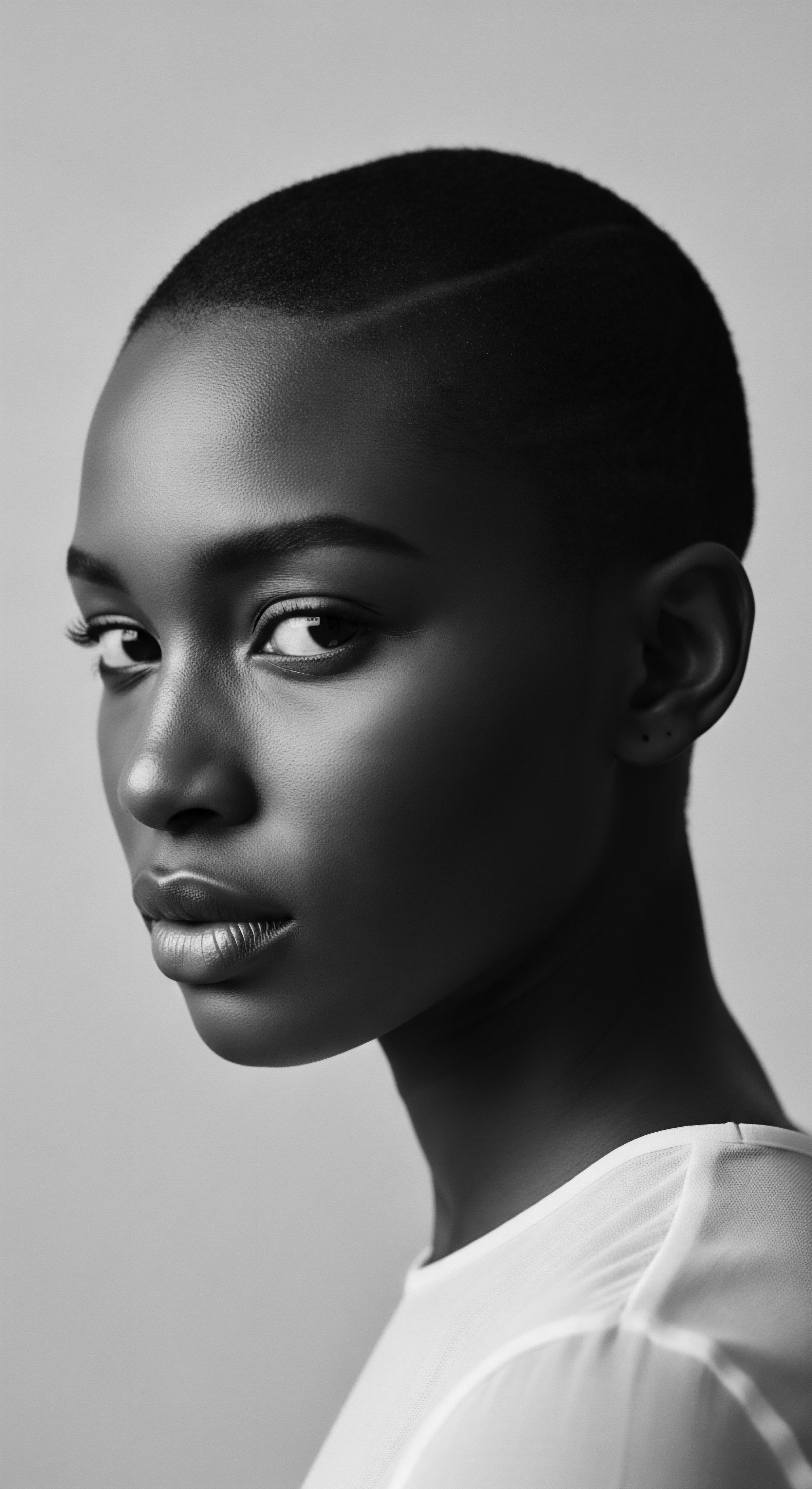
How Does Textured Hair’s Structural Memory Inform Modern Care?
The scientific understanding of textured hair’s unique structure finds its deepest resonance when connected to centuries of ancestral care. Modern trichology, with its advanced tools and biochemical analyses, confirms what our foremothers knew through observation and intuition ❉ that hair with elliptical cross-sections and tight curl patterns requires specific attention to moisture, gentle handling, and protective measures. The twists and turns of each strand create points where the cuticle, the hair’s outermost protective layer, is raised, making it more vulnerable to moisture loss and tangling. This biological reality necessitated the development of practices aimed at sealing in hydration and minimizing mechanical damage.
From West African shea butter to Caribbean coconut oil, ancestral communities across various migratory paths harnessed the natural bounty of their environments to formulate emollients and conditioners. These substances, rich in fatty acids and vitamins, served to lubricate the hair shaft, reducing friction and enhancing suppleness. The knowledge of which plants yielded the most efficacious oils for specific hair needs, and the rituals surrounding their application, were not codified in textbooks but lived and transmitted through direct instruction. This deep, experiential understanding of botanical properties and hair biology is a core aspect of our heritage that modern science now validates, allowing us to build personalized regimens inspired by ancient wisdom.
For instance, the historical reliance on natural cleansers and conditioners, like saponin-rich plants or mucilaginous herbs, addressed the delicate nature of textured hair, preventing excessive stripping of natural oils. Today, the rise of “co-washing” and low-lather shampoos reflects a contemporary return to these gentler cleansing philosophies, demonstrating a cyclical return to ancestral principles for hair health, proving the foresight of those who came before us.

What Role Did Hair Play in Asserting Identity Amidst Displacement?
In contexts of forced migration and cultural suppression, textured hair became a profound symbol of defiance and a canvas for asserting an identity that colonial powers sought to erase. The pressure to conform to Eurocentric beauty standards often involved painful and damaging hair straightening methods, reflecting a systemic attempt to devalue ancestral aesthetics. Yet, through this very struggle, a powerful counter-narrative emerged, rooted in the heritage of self-acceptance and cultural pride.
The “natural hair movement,” though a term of relatively recent coinage, is a continuation of a much older struggle for self-definition through hair. It represents a collective decision to reject imposed beauty norms and to honor the innate beauty of textured hair, reclaiming its heritage as a source of strength. This movement, with its diverse expressions from afros to locs, dreadlocks, and cornrows, actively reclaims and celebrates hairstyles that were once stigmatized.
It is a testament to the enduring power of ancestral practices and aesthetics to shape contemporary identity. This ongoing dialogue between history and the present, between inherited wisdom and evolving expressions, continually fortifies the role of textured hair as a potent symbol of agency and belonging within Black and mixed-race communities.
- Shea Butter ❉ A traditional West African ingredient, used for centuries to moisturize and protect hair from dryness and sun.
- Chebe Powder ❉ Hailing from Chad, a blend of herbs used for generations to strengthen hair strands and promote length retention.
- Aloe Vera ❉ Utilized across various indigenous cultures for its soothing and moisturizing properties for scalp and hair.
The act of wearing one’s natural texture, or choosing traditional protective styles, is a direct link to the ancestral past, transforming personal choice into a powerful statement of cultural continuity. It represents a conscious decision to carry forward a legacy of beauty, resilience, and resistance that has traversed oceans and endured centuries of struggle. This self-affirmation, expressed through hair, echoes the spirit of those who used their braids as maps to freedom or cultivated their coils as crowns of dignity.
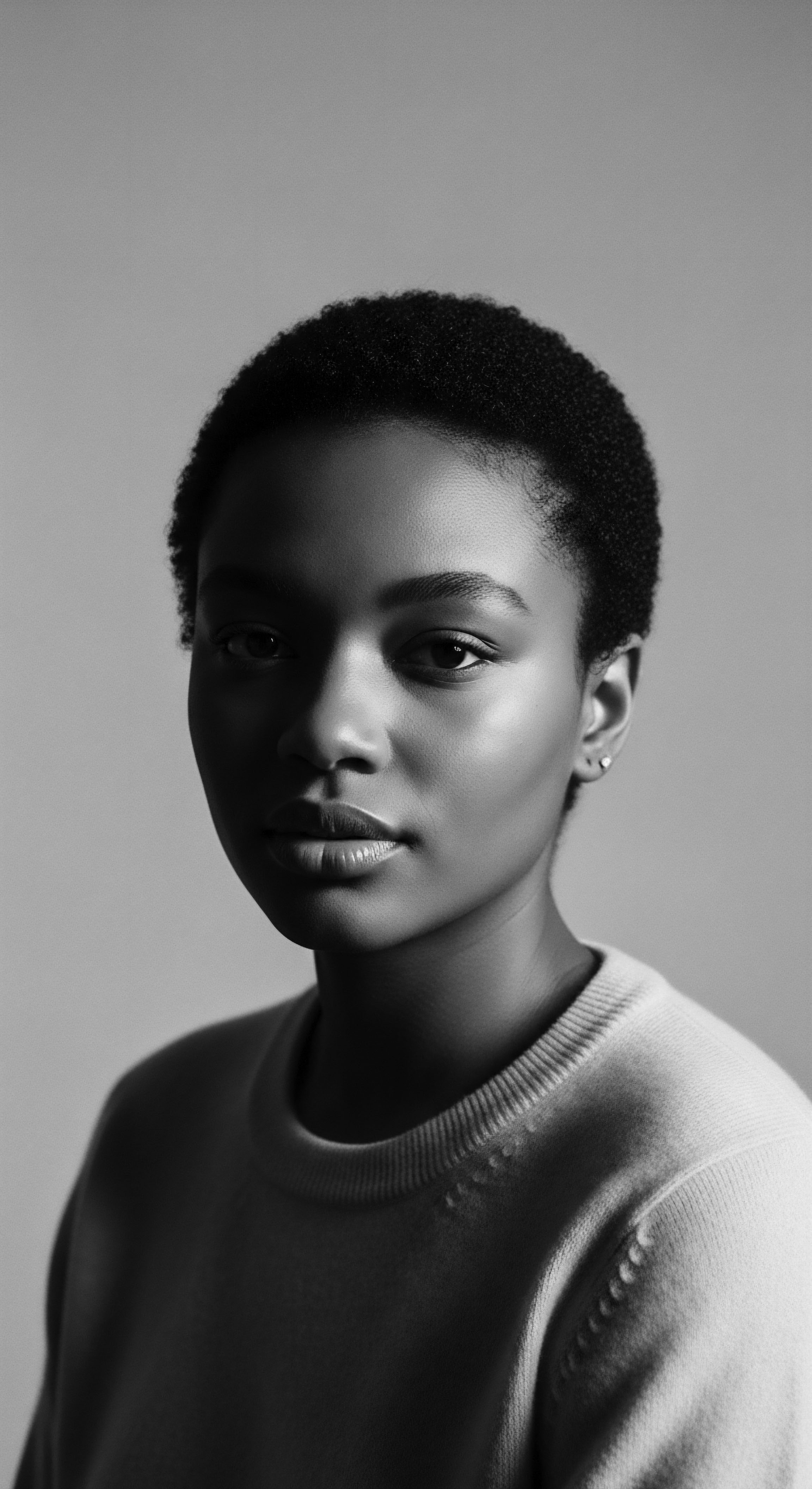
Reflection
The journey of textured hair, from its microscopic origins to its magnificent display, reveals a story that far exceeds mere biology or transient trends. It is a living, breathing archive, a testament to the spirit of a strand that carries the soul of generations. Each coil and curve holds the whispers of ancestral lands, the echoes of migrations both chosen and forced, and the unyielding wisdom gleaned from countless journeys.
In every act of care, every styling choice, every acknowledgment of its innate beauty, we honor this profound heritage. Textured hair, in its very essence, embodies a resilience that is not simply physical, but deeply spiritual and cultural, forever binding us to the courageous, innovative, and beautiful legacy of those who walked before us.
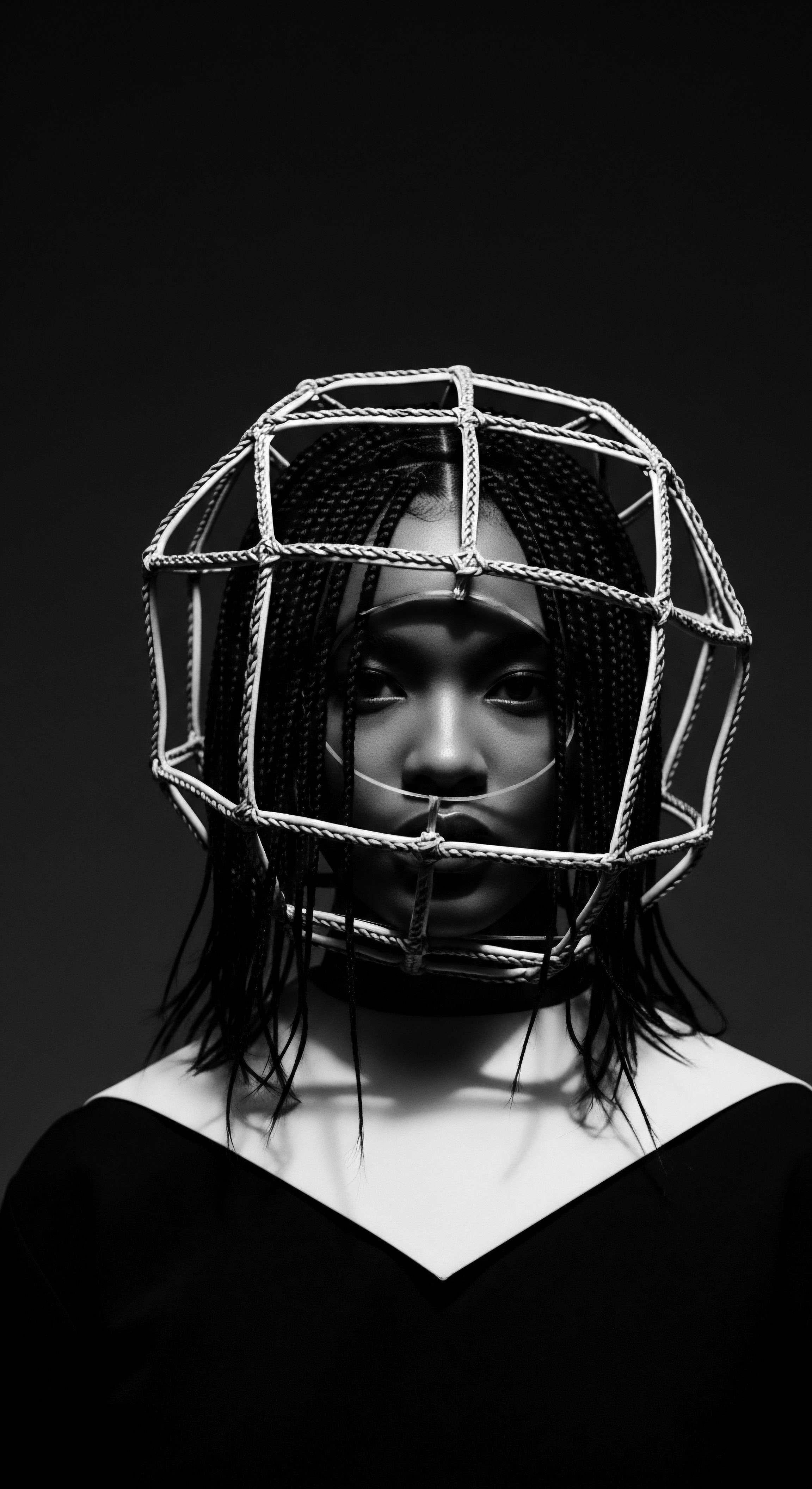
References
- Ancient Origins. (2022). African Slaves Used Braids to Communicate Escape Routes in Colombia.
- Byrd, A. & Tharps, L. L. (2001). Hair Story ❉ Untangling the Roots of Black Hair in America. St. Martin’s Press.
- Dabiri, E. (2019). Don’t Touch My Hair. Harper Perennial.
- Halo Collective. (2024). End Hair Discrimination.
- Jollof Mash. (2023). Before Now, Cornrows Were The Hidden Maps of Freedom.
- Library of Congress. (n.d.). Heavy is the Head ❉ Evolution of African Hair in America from the 17th c. to the 20th c.
- TDS News. (2025). BLACK HISTORY FACTS ❉ The Secret History of Cornrows ❉ How This Ancient Hairstyle Helped Slaves Escape.
